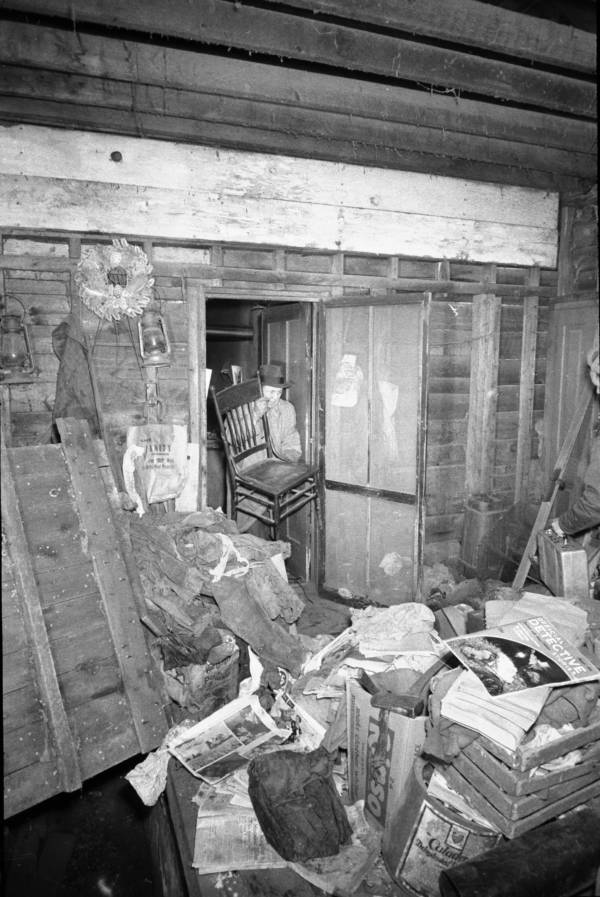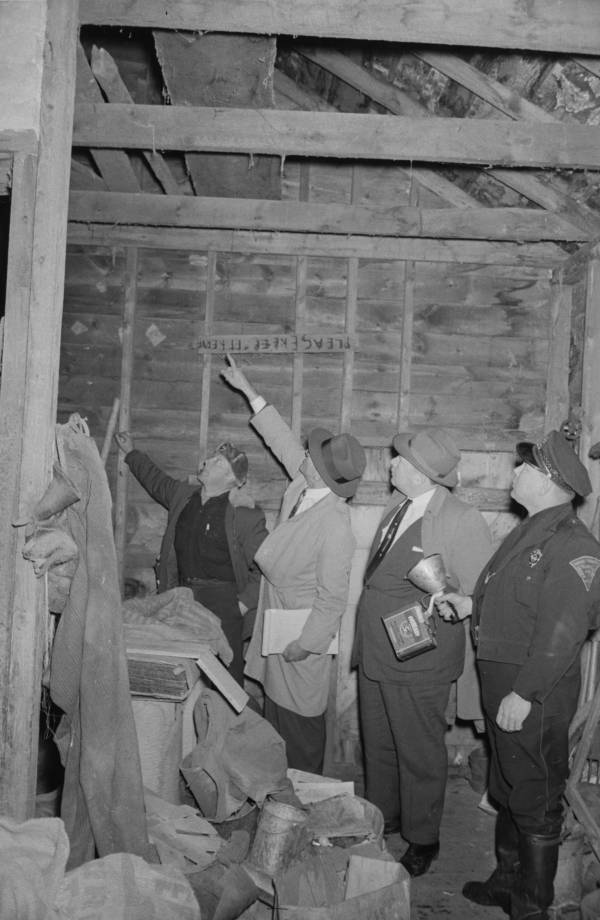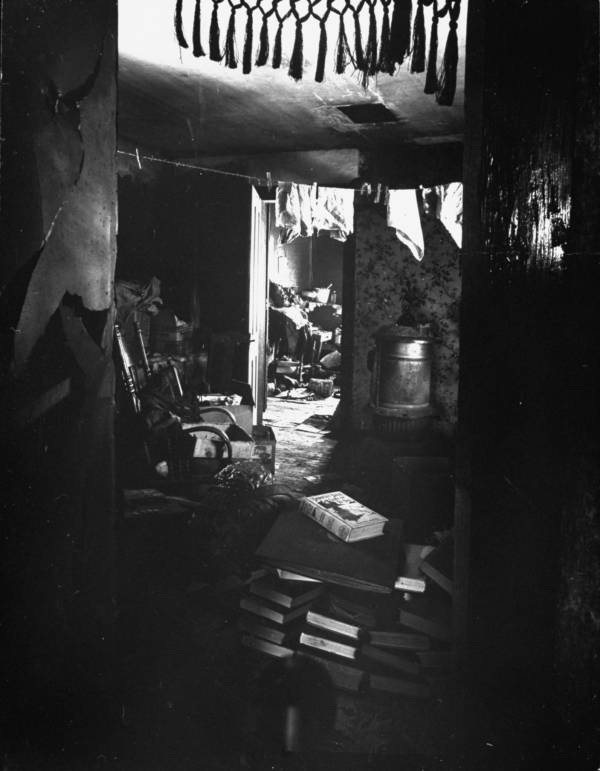The Disturbing Case Of Ed Gein: Crime Scene Photos
What lurks beneath the surface of the seemingly ordinary? The story of Ed Gein reveals a chilling descent into madness, a stark reminder of the human capacity for unspeakable acts.
The rural landscape of Plainfield, Wisconsin, seemed an unlikely setting for such profound darkness. Yet, it was here, in the shadows of an unassuming farmhouse, that Ed Gein crafted a macabre world of human remains, inspiring generations of horror stories and challenging our understanding of the boundaries of sanity.
| Full Name | Edward Theodore Gein |
| Born | August 27, 1906, La Crosse County, Wisconsin, U.S. |
| Died | July 26, 1984 (aged 77), Mendota Mental Health Institute, Madison, Wisconsin, U.S. |
| Known for | Grave robbing, murder, body snatching, necrophilia (suspected) |
| Victims | Confirmed: 2; Suspected: Possibly more |
| Criminal Status | Found not guilty by reason of insanity; Confined to mental institutions |
| Reference | Wikipedia - Ed Gein |
November 16, 1957. The disappearance of Bernice Worden, a local hardware store owner, casts a pall over Plainfield. Suspicions fall upon the reclusive Ed Gein, whose peculiar habits and unsettling demeanor had long made him an object of curiosity, if not outright fear, in the small town.
What authorities discovered upon entering Geins dilapidated farmhouse defied comprehension. It wasn't just a home; it was a grotesque museum of human remains. Skulls adorned bedposts. Chairs were upholstered with human skin. A wastebasket fashioned from human flesh. Lampshades made of human skin. Bernice Wordens decapitated body, hung upside down, was found in a shed. The sheer depravity of the scene shocked even seasoned investigators. This was no ordinary crime scene; it was a descent into the abyss of the human psyche.
Ed Gein's crimes transcended mere murder. They represented a perverse fascination with the human body, a morbid desire to possess and transform the deceased. The discovery of body parts from numerous exhumed corpses revealed a pattern of grave robbing, extending Geins reign of terror far beyond the two confirmed murders he committed.
Geins horrific acts sparked a media frenzy. The Butcher of Plainfield, as he became known, captured the morbid fascination of the nation, his name becoming synonymous with macabre horror. The case challenged the legal system, raising questions about culpability and the nature of insanity. Deemed unfit to stand trial, Gein was committed to a mental institution, where he remained until his death in 1984.
The legacy of Ed Gein extends far beyond the confines of Plainfield. His gruesome handiwork inspired numerous horror films, including Psycho, The Texas Chainsaw Massacre, and The Silence of the Lambs. Norman Bates taxidermy-filled parlor, Leatherfaces human skin mask, and Buffalo Bills macabre creations all owe a debt to the real-life horrors perpetrated by Gein. He became a chilling archetype, a symbol of the darkness that can fester within seemingly ordinary individuals.
Gein's upbringing offers a glimpse, though not an excuse, into the genesis of his depravity. Dominated by a fanatically religious mother who instilled in him a deep-seated fear of women and sexuality, Gein grew up isolated and emotionally stunted. His mothers death in 1945 left a void in his life, and his subsequent descent into madness unfolded in the decaying farmhouse they had shared.
The disturbing artifacts recovered from Geins home the bowls made from skulls, the chair upholstered with human skin, the corset fashioned from a female torso became grim relics, testament to the depths of human depravity. While many of these macabre creations were destroyed after the trial, their existence continues to haunt our collective consciousness.
Ed Gein remains a chilling reminder of the darkness that can lurk beneath the faade of normalcy. His story forces us to confront the unsettling truth that the line between sanity and madness can be terrifyingly thin. He remains a subject of both fascination and revulsion, a figure who continues to fuel our darkest nightmares and challenge our understanding of the human condition.
The investigation surrounding Ed Geins crimes was meticulous, though ultimately hampered by the sheer horror of the discoveries. Crime lab specialist Jim Halligan painstakingly documented the scene, his photographs becoming crucial evidence in the case. The disarray and the grotesque nature of the items found within the house painted a vivid picture of Geins disturbed mind.
The case also highlighted the limitations of the legal system in dealing with extreme cases of mental illness. Geins insanity plea, while controversial, ultimately reflected the inability of the legal framework to adequately address the complexities of his psychological state. His confinement in mental institutions rather than imprisonment sparked debate about the intersection of justice and mental health, a debate that continues to this day.
The story of Ed Gein remains a dark chapter in American criminal history. More than just a true crime narrative, it's a cautionary tale about the fragility of the human psyche and the potential for unspeakable horror to reside within the most unassuming of individuals. Its a story that continues to resonate, reminding us of the enduring power of the macabre and the enduring fascination with the darkest corners of the human mind.


